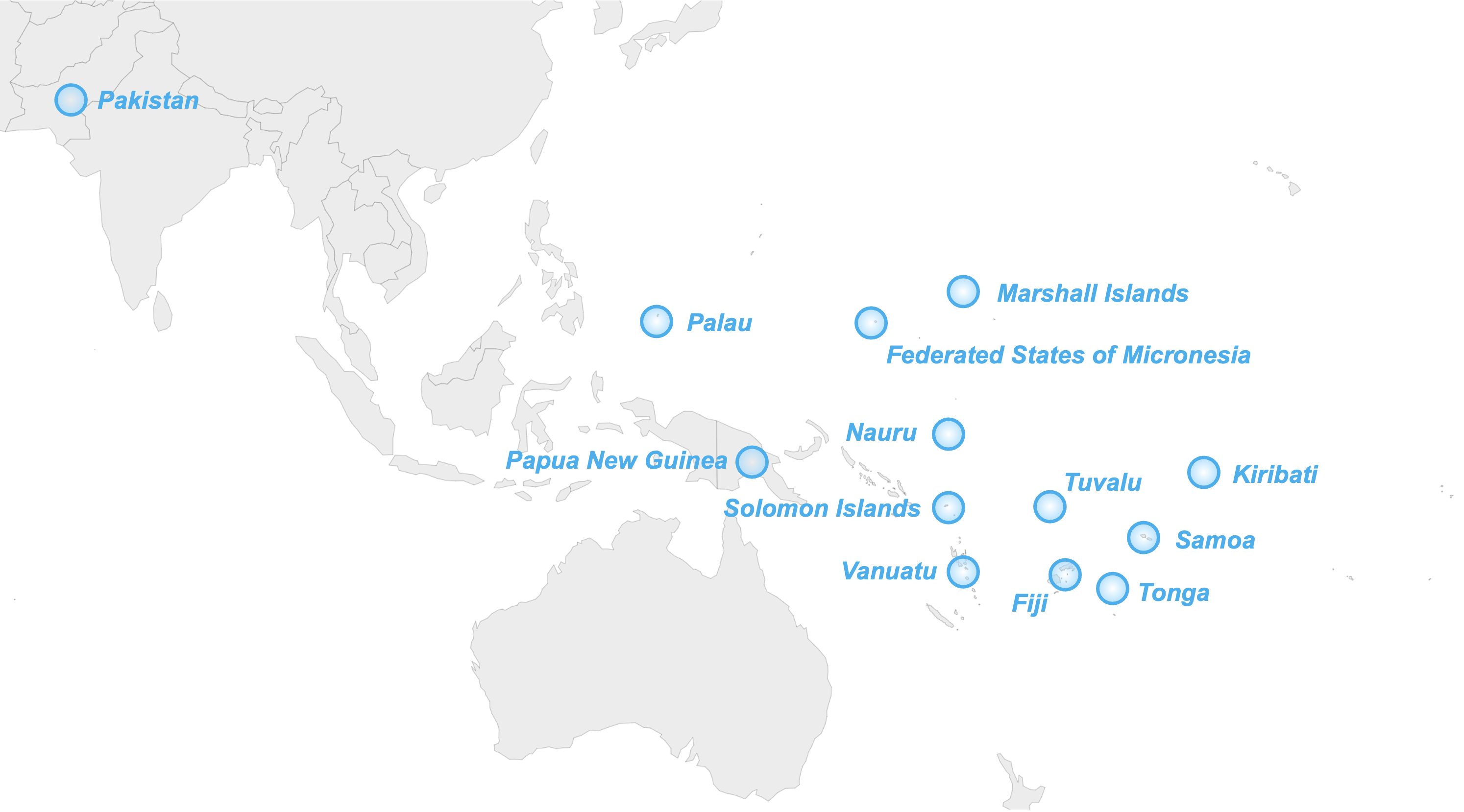The SVSI initiative is currently being implemented in various countries in Asia and the Pacific, including Federated States of Micronesia, Fiji, Kiribati, Marshall Islands, Nauru, Pakistan, Palau, Papua New Guinea, Samoa, Solomon Islands, Tonga, Tuvalu and Vanuatu.

The work on Smart Islands is supported by the following Joint SDG Fund projects:
"Accelerating SDG achievement through digital transformation to strengthen community resilience in Micronesia"
UN Partners: ITU (Lead), FAO, ILO, UNESCO, UNICEF, UNOPS
Technical partner: UNODC
Countries: Federated States of Micronesia, Marshall Islands, Nauru, Palau, and Kiribati
Project duration: September 2022 - 31 July 2025
"Advancing the SDGs by Improving livelihoods and resilience via economic diversification and digital transformation"
UN Partners: ILO (Lead), ITU, UNESCO, UNODC, UNOPS, OHCHR
Countries: Fiji, Solomon Islands, Tonga, Vanuatu, and Tuvalu
Project duration: 1 September 2022 - 31 May 2025
"Smart Islands in the Pacific"
UN Cooperating agency: International Telecommunication Union (ITU)
Cooperating agency: Asian Development Bank (ADB)
Project duration: October 2022 – December 2025
Countries: Fiji, Papua New Guinea, Vanuatu
The Smart Village project in Pakistan is implemented under the following partnership:
"Smart Village Pakistan"
UN cooperating agency: International Telecommunication Union (ITU)
Government cooperating agency: Ministry of Information Technology and Telecommunication
Contributing partner: Huawei Inc.
Project duration: November 2022 – September 2025.
Countries: Pakistan